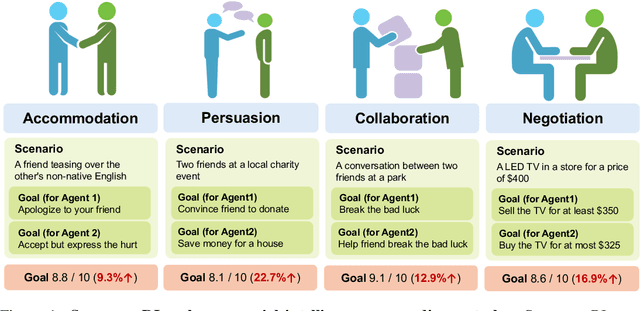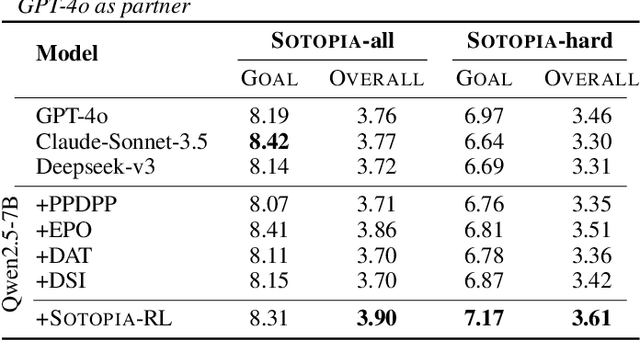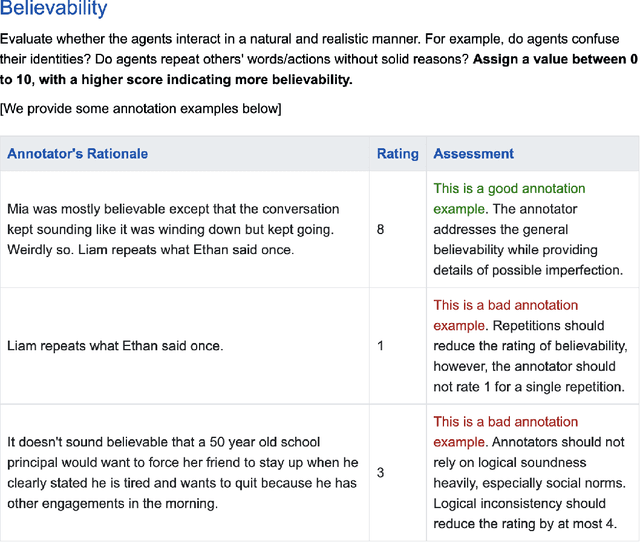Hao Zhu
ComGS: Efficient 3D Object-Scene Composition via Surface Octahedral Probes
Oct 09, 2025Abstract:Gaussian Splatting (GS) enables immersive rendering, but realistic 3D object-scene composition remains challenging. Baked appearance and shadow information in GS radiance fields cause inconsistencies when combining objects and scenes. Addressing this requires relightable object reconstruction and scene lighting estimation. For relightable object reconstruction, existing Gaussian-based inverse rendering methods often rely on ray tracing, leading to low efficiency. We introduce Surface Octahedral Probes (SOPs), which store lighting and occlusion information and allow efficient 3D querying via interpolation, avoiding expensive ray tracing. SOPs provide at least a 2x speedup in reconstruction and enable real-time shadow computation in Gaussian scenes. For lighting estimation, existing Gaussian-based inverse rendering methods struggle to model intricate light transport and often fail in complex scenes, while learning-based methods predict lighting from a single image and are viewpoint-sensitive. We observe that 3D object-scene composition primarily concerns the object's appearance and nearby shadows. Thus, we simplify the challenging task of full scene lighting estimation by focusing on the environment lighting at the object's placement. Specifically, we capture a 360 degrees reconstructed radiance field of the scene at the location and fine-tune a diffusion model to complete the lighting. Building on these advances, we propose ComGS, a novel 3D object-scene composition framework. Our method achieves high-quality, real-time rendering at around 28 FPS, produces visually harmonious results with vivid shadows, and requires only 36 seconds for editing. Code and dataset are available at https://nju-3dv.github.io/projects/ComGS/.
SpatialVID: A Large-Scale Video Dataset with Spatial Annotations
Sep 11, 2025Abstract:Significant progress has been made in spatial intelligence, spanning both spatial reconstruction and world exploration. However, the scalability and real-world fidelity of current models remain severely constrained by the scarcity of large-scale, high-quality training data. While several datasets provide camera pose information, they are typically limited in scale, diversity, and annotation richness, particularly for real-world dynamic scenes with ground-truth camera motion. To this end, we collect \textbf{SpatialVID}, a dataset consists of a large corpus of in-the-wild videos with diverse scenes, camera movements and dense 3D annotations such as per-frame camera poses, depth, and motion instructions. Specifically, we collect more than 21,000 hours of raw video, and process them into 2.7 million clips through a hierarchical filtering pipeline, totaling 7,089 hours of dynamic content. A subsequent annotation pipeline enriches these clips with detailed spatial and semantic information, including camera poses, depth maps, dynamic masks, structured captions, and serialized motion instructions. Analysis of SpatialVID's data statistics reveals a richness and diversity that directly foster improved model generalization and performance, establishing it as a key asset for the video and 3D vision research community.
WIPES: Wavelet-based Visual Primitives
Aug 18, 2025Abstract:Pursuing a continuous visual representation that offers flexible frequency modulation and fast rendering speed has recently garnered increasing attention in the fields of 3D vision and graphics. However, existing representations often rely on frequency guidance or complex neural network decoding, leading to spectrum loss or slow rendering. To address these limitations, we propose WIPES, a universal Wavelet-based vIsual PrimitivES for representing multi-dimensional visual signals. Building on the spatial-frequency localization advantages of wavelets, WIPES effectively captures both the low-frequency "forest" and the high-frequency "trees." Additionally, we develop a wavelet-based differentiable rasterizer to achieve fast visual rendering. Experimental results on various visual tasks, including 2D image representation, 5D static and 6D dynamic novel view synthesis, demonstrate that WIPES, as a visual primitive, offers higher rendering quality and faster inference than INR-based methods, and outperforms Gaussian-based representations in rendering quality.
Marine Chlorophyll Prediction and Driver Analysis based on LSTM-RF Hybrid Models
Aug 07, 2025Abstract:Marine chlorophyll concentration is an important indicator of ecosystem health and carbon cycle strength, and its accurate prediction is crucial for red tide warning and ecological response. In this paper, we propose a LSTM-RF hybrid model that combines the advantages of LSTM and RF, which solves the deficiencies of a single model in time-series modelling and nonlinear feature portrayal. Trained with multi-source ocean data(temperature, salinity, dissolved oxygen, etc.), the experimental results show that the LSTM-RF model has an R^2 of 0.5386, an MSE of 0.005806, and an MAE of 0.057147 on the test set, which is significantly better than using LSTM (R^2 = 0.0208) and RF (R^2 =0.4934) alone , respectively. The standardised treatment and sliding window approach improved the prediction accuracy of the model and provided an innovative solution for high-frequency prediction of marine ecological variables.
Sotopia-RL: Reward Design for Social Intelligence
Aug 05, 2025



Abstract:Social intelligence has become a critical capability for large language models (LLMs), enabling them to engage effectively in real-world social tasks such as accommodation, persuasion, collaboration, and negotiation. Reinforcement learning (RL) is a natural fit for training socially intelligent agents because it allows models to learn sophisticated strategies directly through social interactions. However, social interactions have two key characteristics that set barriers for RL training: (1) partial observability, where utterances have indirect and delayed effects that complicate credit assignment, and (2) multi-dimensionality, where behaviors such as rapport-building or knowledge-seeking contribute indirectly to goal achievement. These characteristics make Markov decision process (MDP)-based RL with single-dimensional episode-level rewards inefficient and unstable. To address these challenges, we propose Sotopia-RL, a novel framework that refines coarse episode-level feedback into utterance-level, multi-dimensional rewards. Utterance-level credit assignment mitigates partial observability by attributing outcomes to individual utterances, while multi-dimensional rewards capture the full richness of social interactions and reduce reward hacking. Experiments in Sotopia, an open-ended social learning environment, demonstrate that Sotopia-RL achieves state-of-the-art social goal completion scores (7.17 on Sotopia-hard and 8.31 on Sotopia-full), significantly outperforming existing approaches. Ablation studies confirm the necessity of both utterance-level credit assignment and multi-dimensional reward design for RL training. Our implementation is publicly available at: https://github.com/sotopia-lab/sotopia-rl.
Wind Power Scenario Generation based on the Generalized Dynamic Factor Model and Generative Adversarial Network
Aug 01, 2025Abstract:For conducting resource adequacy studies, we synthesize multiple long-term wind power scenarios of distributed wind farms simultaneously by using the spatio-temporal features: spatial and temporal correlation, waveforms, marginal and ramp rates distributions of waveform, power spectral densities, and statistical characteristics. Generating the spatial correlation in scenarios requires the design of common factors for neighboring wind farms and antithetical factors for distant wind farms. The generalized dynamic factor model (GDFM) can extract the common factors through cross spectral density analysis, but it cannot closely imitate waveforms. The GAN can synthesize plausible samples representing the temporal correlation by verifying samples through a fake sample discriminator. To combine the advantages of GDFM and GAN, we use the GAN to provide a filter that extracts dynamic factors with temporal information from the observation data, and we then apply this filter in the GDFM to represent both spatial and frequency correlations of plausible waveforms. Numerical tests on the combination of GDFM and GAN have demonstrated performance improvements over competing alternatives in synthesizing wind power scenarios from Australia, better realizing plausible statistical characteristics of actual wind power compared to alternatives such as the GDFM with a filter synthesized from distributions of actual dynamic filters and the GAN with direct synthesis without dynamic factors.
DicFace: Dirichlet-Constrained Variational Codebook Learning for Temporally Coherent Video Face Restoration
Jun 16, 2025Abstract:Video face restoration faces a critical challenge in maintaining temporal consistency while recovering fine facial details from degraded inputs. This paper presents a novel approach that extends Vector-Quantized Variational Autoencoders (VQ-VAEs), pretrained on static high-quality portraits, into a video restoration framework through variational latent space modeling. Our key innovation lies in reformulating discrete codebook representations as Dirichlet-distributed continuous variables, enabling probabilistic transitions between facial features across frames. A spatio-temporal Transformer architecture jointly models inter-frame dependencies and predicts latent distributions, while a Laplacian-constrained reconstruction loss combined with perceptual (LPIPS) regularization enhances both pixel accuracy and visual quality. Comprehensive evaluations on blind face restoration, video inpainting, and facial colorization tasks demonstrate state-of-the-art performance. This work establishes an effective paradigm for adapting intensive image priors, pretrained on high-quality images, to video restoration while addressing the critical challenge of flicker artifacts. The source code has been open-sourced and is available at https://github.com/fudan-generative-vision/DicFace.
LIFELONG SOTOPIA: Evaluating Social Intelligence of Language Agents Over Lifelong Social Interactions
Jun 14, 2025Abstract:Humans engage in lifelong social interactions through interacting with different people under different scenarios for different social goals. This requires social intelligence to gather information through a long time span and use it to navigate various social contexts effectively. Whether AI systems are also capable of this is understudied in the existing research. In this paper, we present a novel benchmark, LIFELONG-SOTOPIA, to perform a comprehensive evaluation of language agents by simulating multi-episode interactions. In each episode, the language agents role-play characters to achieve their respective social goals in randomly sampled social tasks. With LIFELONG-SOTOPIA, we find that goal achievement and believability of all of the language models that we test decline through the whole interaction. Although using an advanced memory method improves the agents' performance, the best agents still achieve a significantly lower goal completion rate than humans on scenarios requiring an explicit understanding of interaction history. These findings show that we can use LIFELONG-SOTOPIA to evaluate the social intelligence of language agents over lifelong social interactions.
SpatialLM: Training Large Language Models for Structured Indoor Modeling
Jun 09, 2025Abstract:SpatialLM is a large language model designed to process 3D point cloud data and generate structured 3D scene understanding outputs. These outputs include architectural elements like walls, doors, windows, and oriented object boxes with their semantic categories. Unlike previous methods which exploit task-specific network designs, our model adheres to the standard multimodal LLM architecture and is fine-tuned directly from open-source LLMs. To train SpatialLM, we collect a large-scale, high-quality synthetic dataset consisting of the point clouds of 12,328 indoor scenes (54,778 rooms) with ground-truth 3D annotations, and conduct a careful study on various modeling and training decisions. On public benchmarks, our model gives state-of-the-art performance in layout estimation and competitive results in 3D object detection. With that, we show a feasible path for enhancing the spatial understanding capabilities of modern LLMs for applications in augmented reality, embodied robotics, and more.
Bounded Rationality for LLMs: Satisficing Alignment at Inference-Time
May 29, 2025Abstract:Aligning large language models with humans is challenging due to the inherently multifaceted nature of preference feedback. While existing approaches typically frame this as a multi-objective optimization problem, they often overlook how humans actually make decisions. Research on bounded rationality suggests that human decision making follows satisficing strategies-optimizing primary objectives while ensuring others meet acceptable thresholds. To bridge this gap and operationalize the notion of satisficing alignment, we propose SITAlign: an inference time framework that addresses the multifaceted nature of alignment by maximizing a primary objective while satisfying threshold-based constraints on secondary criteria. We provide theoretical insights by deriving sub-optimality bounds of our satisficing based inference alignment approach. We empirically validate SITAlign's performance through extensive experimentation on multiple benchmarks. For instance, on the PKU-SafeRLHF dataset with the primary objective of maximizing helpfulness while ensuring a threshold on harmlessness, SITAlign outperforms the state-of-the-art multi objective decoding strategy by a margin of 22.3% in terms of GPT-4 win-tie rate for helpfulness reward while adhering to the threshold on harmlessness.
 Add to Chrome
Add to Chrome Add to Firefox
Add to Firefox Add to Edge
Add to Edge